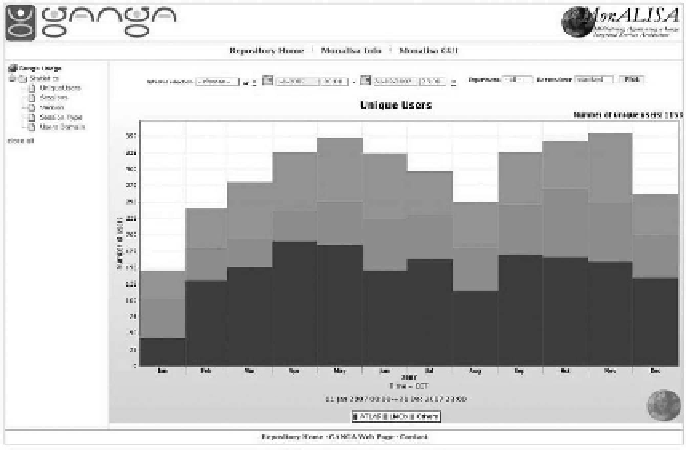Information Technology Reference
In-Depth Information
FIGURE 17.2
Ganga usage as reported by MonALISA [12]. In 2007 over 1000 distinct users
(unique users) tried out Ganga. Each month, over 100 ATLAS users and about 50 LHCb
users use Ganga for their activities. An additional 50 users (25% of the total) are coming
from other communities (mainly outside HEP).
and gluons) and ultimately the structure of nuclei. When QCD is studied
on discrete systems (Lattice QCD), it requires nontrivial computing
resources. The application that we present here is a study of phase transi-
tions in a quark-gluon plasma [13].
The interest of the example from the computing point of view lies
mainly in the fact that Ganga allows a very fast porting of an application
onto the grid. The clear scientii c advantage is that, with an investment of
about 1 week during summer 2007 for porting and running on the EGEE
infrastructure, the available statistics have been multiplied by four com-
pared to the one collected over several months on dedicated resources.
The application performs a series of iterations, descriptive of the space-
time lattice to be investigated. Of these lattices, 21 different versions exist,
all describing slightly different physical conditions. Independent (from a
random number generation point of view) programs running on the differ-
ent lattice coni gurations produce results that can be statistically added to
study the behaviors of the quark-gluon plasma. Since the result improves
with the number of iterations performed and the result is saved in the
space-time lattice, it makes sense to run the application for as long as pos-
sible (ideally until the batch queue time is reached). Therefore the decision
was taken to run in an ini nite loop and to regularly send back the results to
a simple server. This allows the script, which runs on the worker node, to be

Search WWH ::

Custom Search